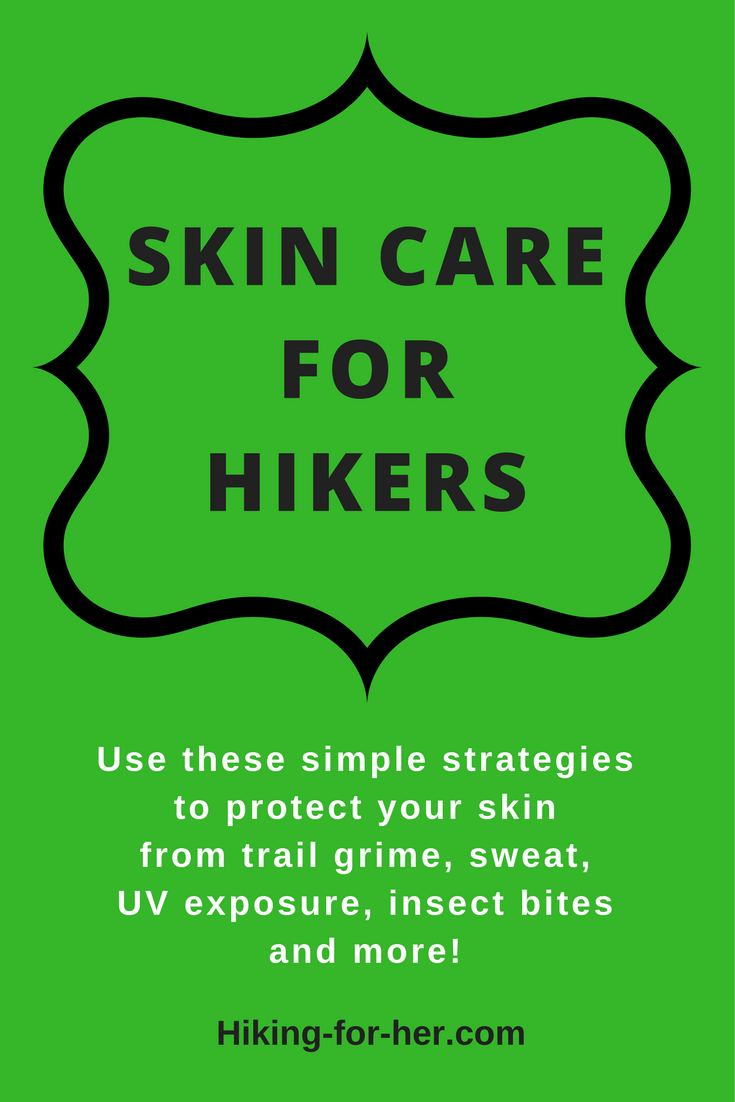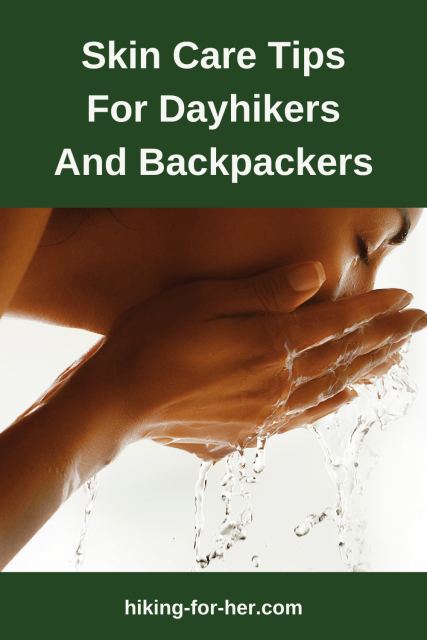
Skin Care For Hikers:
The Basics For Dayhiking And Backpacking
By Diane Spicer
Skin care for hikers seems pretty straightforward, right?
Wrong.
Think of your skin as having different zones with specific needs depending on how much sun exposure it receives, how much abrasion it endures, or how quickly it can renew itself.
Your skin is your largest organ, and performs an amazing array of tasks for you as you hike:
- thermoregulation via sweating and pores
- dumping of wastes and by products
- vitamin D activation
- protection against abrasions
And lots more!
So why not take good care of this outer covering, using these tips for basic skin care for hikers?
Note: None of this is medical advice, just some common sense trail tested approaches to great skin care for hikers.
Why skin care for hikers is important
On a typical hiking trail, a hiker's skin will need to stand up to any or all of these scenarios:
- coping with copious sweat
- unpleasant insect bites and stings
- prickly, sharp edged plants
- hours of ultraviolet radiation exposure from the sun, or reflected off snow, water or rock
- embedded dirt from windy, dusty trails
- chafing and rubbing from backpacks and clothing
- blisters from too much friction, moisture and heat
Is there any way to prevent these scenarios from taking a toll on your skin?
Not completely.
But the good news is there are things you can do, and products you can use, to make skin care for hikers simple and effective.
Let's take it one general scenario at a time, with specific recommendations for you to try on your own precious outer covering.
If you want skin care tips specific to day hikers, these are for you. (coming soon)
Skin care for backpackers is covered here. (coming soon)
Coping with irritating sweat
If you're a year round hiker, you sweat.
A lot.
In hot sunny weather, the ambient temperature threatens to send your body temperature out of normal limits, so your skin pores dilate to release heat brought to the surface via blood vessels.
In cold weather, you sweat because you're all bundled up but you're working hard as you snowshoe or work your way up a frozen slope using crampons or traction spikes.
- Again, increased blood flow to the surface, but in this case, into your layers of clothing.
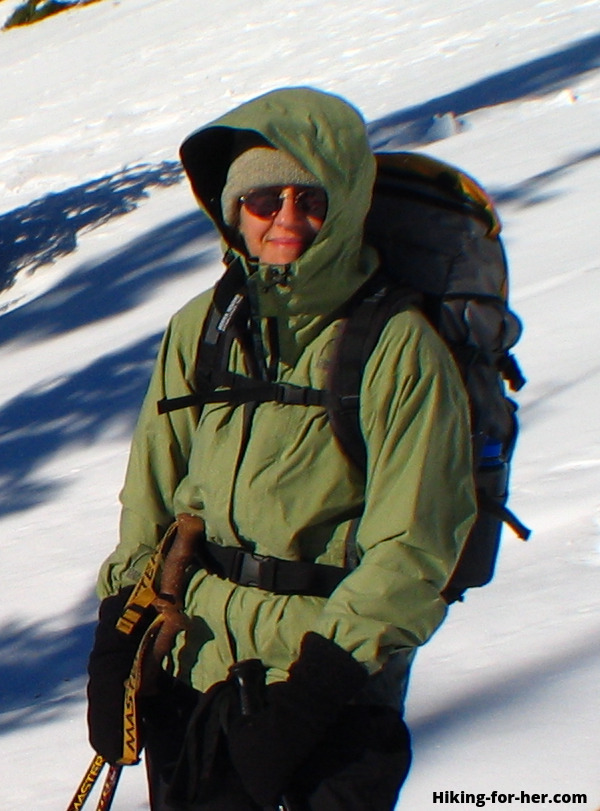
Either way, you're distributing a layer of salty, irritating sweat across your skin.
And it pools in the creases and crevices of your body, which can lead to blisters, irritated skin, and break outs.
Women have a lot of places for pooling: beneath and between breasts, groin area, armpits...
Time for some skin care for hikers tips to address that issue!
Mop it up
To protect your skin from the corrosive effects of sweat, use moisture wicking clothing to draw the salty water away.
And always choose fabrics which can be easily machined washed.
- Some good choices for absorbent, fast drying hiking clothing can be found here.
Another way to mop up sweat before it can run into your eyes is to use an absorbent head band.
- Be sure to choose a sturdy one like that one, thick enough to do the job but not too thick, and made of thirsty material.
Some hikers prefer a hiking bandanna tucked into a pocket, to be pulled out for mopping up when needed.
- The beauty of a bandanna is its versatility, which you can read about here.
If you like to wear ball cap style hats, stick with the ones that feature highly absorbent fabrics, like this one. A heavy, non-ventilated hat will only increase your mopping duties.
Insect bites and stings
If you've been outdoors several times before, you already know how reactive you are/are not to stinging, biting insects.
And you probably have a general idea of how many of these nasty little critters you're going to face during your hiking trip.
For hiking in areas with hordes of insects looking to pierce your skin, like Alaska, a bug head net is a necessity.
If you're hiking in less extremely buggy areas, try these ways to prevent your skin from becoming a feast:
- Use appropriate insect repellents.
- Avoid the buggiest times of day: early morning and dusk.
- Wear appropriate clothing for the terrain and temperature, covering up as much of your skin as possible while remaining comfortable.
Itch relief
Skin care for hikers faces the reality that you'll get bitten even if you take appropriate precautions.
So after you've been bitten, you can ease the sting and itchy sensations by using products to counteract the chemicals which the insects injected into your skin.
- After Bite itch relief
- Calamine Plus itch reliever (note: leaves a pink film on your skin but who cares? It takes away the itch.)
To keep broken skin from bites and stings protected against trail dirt, your basic hiking first aid kit should be well stocked with band-aids of all sizes!
- And of course the trick is to remember to restock it once you use some supplies.
- Otherwise you will have to resort to your Plan B skin care for hikers strategy: scratching like crazy or jumping in the lake.
- Tip: I put the empty band aid wrapper(s) inside my waterproof phone case, to be sure I see it when I get home and remove my phone.
Botanically based skin insults
No matter where in the world you hike, except Antarctica in the winter time, you'll run into thorns, spines, sharp pokey leaves and plants which make poisonous oils.
To counteract skin problems, you can use the calamine lotion noted above.
Or carry products which are specifically designed to soothe and heal skin inflammation from a particular plant source.
Example:
Tip: A quick way to counteract skin inflammation from any source, plant or insect, is to apply a cold pack to the area.
- Carry a small pack that can be activated when needed.
- Or fetch a reusable cold pack from the freezer once you're home.
Just be sure to place a thin insulating layer of fabric between your skin and the cold application. Frost bite on top of poison ivy = no fun.
Ultraviolet radiation exposure
Regardless of your skin tone, your skin cells are vulnerable to the damaging effects of overexposure to UV radiation.
Cells on the outside of your body require the same strategies as the cells inside, in terms of proper hydration and nutrition.
But there are additional ways to protect yourself from sun damage as a hiker:
- Avoid hiking in the open during the hours when sunlight falls directly onto Earth, generally between 10A and 2P.
- Create your own shade using a hiking umbrella.
- Select the best UPF sun protective clothing for your hiking style.
- Wear well vented full coverage hats, like this one.
- Choose your sunscreen wisely, and apply it liberally and often.
- Build up a darker skin tone gradually through late spring and summer, to avoid the pain and damaging effects of sunburn.
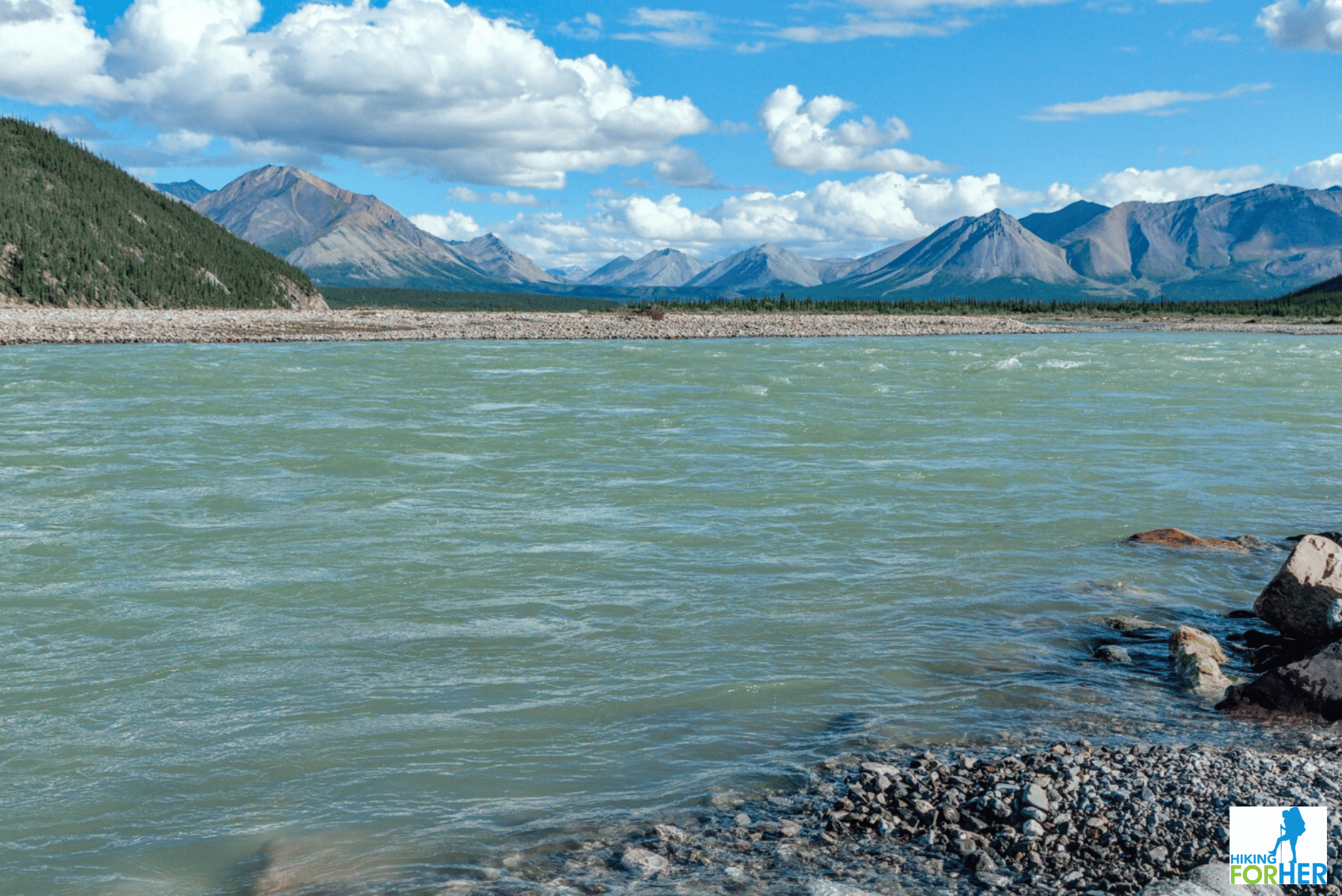 Good sun avoidance strategy for hikers who need to be out in strong sunlight all day long includes long sleeves, long pants, full coverage hat, and sunglasses.
Good sun avoidance strategy for hikers who need to be out in strong sunlight all day long includes long sleeves, long pants, full coverage hat, and sunglasses.
Already in the ouch zone?
If you are stuck with a sun burn, use a product which can soothe and help your skin repair quickly:
- Alocane
- Organic aloe vera gel (useful for other skin irritants, too, and feels so soothing)
Repackage these in small containers just right for the length of your trip, like these little tubes.
Even if you haven't burned, you can treat your skin to lubrication and nourishment without chemicals using this after sun soother.
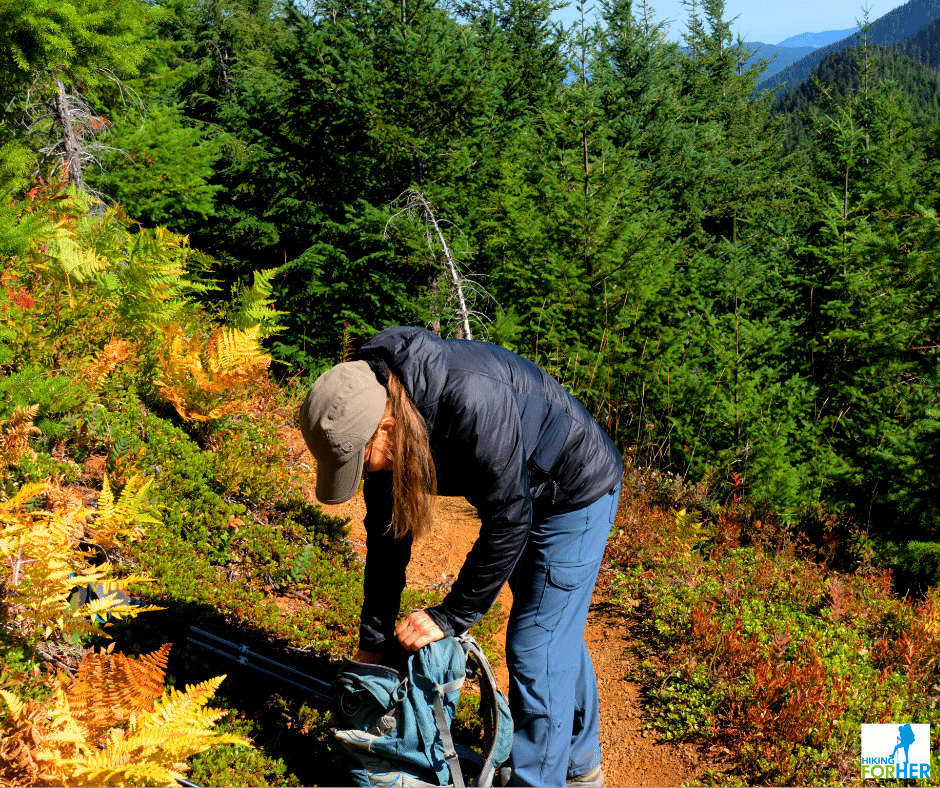 Hitting the trail means getting grimy!
Hitting the trail means getting grimy!
Embedded dirt
As I hike a dusty trail, my "laugh lines" (ok, wrinkles) fill up with dust and dirt.
I look like a caricature of my usually clean self!
So I've learned to carry a few things to wipe off that dirt before it has a chance to settle deeply into nooks and crannies.
- These unscented moist wipes are alcohol free, and feel refreshing as they remove sweat and grime.
Back at home, I use an exfoliant to encourage the dirt to part ways with my epidermis.
- This is my favorite brand, because it doesn't have a lot of chemicals or weird fragrance.
Of course after roughing up your skin, you'll want to moisturize it.
Have you ever tried this lotion? It makes your skin feel silky smooth while encouraging the cells to get busy and make more layers.
Chafing problems: important skin care for hikers
Of all the products aimed at skin care for hikers, Body Glide is the most widely recommended for preventing chafing.
Thru hikers swear by it, day after day.
And if you're at all prone to skin rubbing, or want to avoid problems when using new gear or new hiking clothing, carry this along on your hikes.
- It won't stain clothing or gear, either.
Here's another approach: at rest breaks, wipe down sweaty skin in chafe prone areas with an absorbent, quick dry towel.
- Pay close attention to the skin between and underneath your breasts, the creases in your groin and buttocks, and the tender skin beneath your waist band.
- Attach the used towel to the outside of your backpack, and allow air flow and sunlight to keep it odor free and dry for your next round of skin care for hikers.
Also be sure that your clothing isn't too restrictive.
Hiking clothing needs to be a bit looser than your street clothes to accommodate your higher activity levels.
- You want to avoid dragging abrasive fabric over your delicate skin areas with each step or upper body movement.
- Why create additional skin care for hikers scenarios, when you can avoid them altogether?
Blisters - ugh!
Blisters plague hikers regardless of season, type of trail, gender, age or hiking ability.
To avoid as much pain and misery as possible, read these blister prevention tips.
Here's the best blister prevention tip I can give you:
- Always deal aggressively with the first signs of a blister, usually a hot spot that draws your attention to a particular body region.
- These blister treatment ideas will help.
Be sure your first aid kit is stocked with these helpful items:
Note that with moleskin, you will need a pair of scissors or some other cutting method to shape the piece to the size of your blister.
If you are repeatedly dealing with blisters on your feet, use specially designed anti-blister hiking socks like Armaskin.
- Read my review here. These are amazing socks, designed to ward off hot spots and blisters.
For more hiking foot care strategies, go here.
What about cosmetics on the trail?
Immersing yourself in nature is a chance to leave your public face behind.
If you're leery about leaving your daily cosmetics and make up behind, ask yourself who you're wearing it for: yourself, or the outer world?
- The outer world of trees, rocks, streams, and blue sky thinks you're beautiful just the way you are!
Plus, there are a couple of good reasons to skip the application of eye make up on a backpacking trip:
- Your chance of an eye infection or corneal abrasion increases because you don't have access to your usual hygiene routine.
- You're going to sweat, and then sweat some more, so what looks great at the beginning of your hike might not be so lovely within a few hours. All that work for nothing :)
And just a word about fragrances on the trail.
In bear country, you don't want to smell like anything other than your dirty, sweat covered self.
Even if it's "nothing" except chipmunks and raccoons where you're hiking, they can be incredibly destructive to hiking gear and camping supplies.
So skip critter attracting fragrant cosmetics, hair products, and perfume and switch over to an unscented product for skin and hair hygiene.
- Dr. Bronner's unscented soap is what I rely on to keep my face, hands, hair and body clean.
- I carry a small amount in this type of handy plastic container.
- I also use it daily at home, so my skin doesn't experience a big jolt from a brand new product during a hiking trip, which can lead to break outs and irritation.
For more female hygiene hiking tips beyond skin care, read this.
Or put together your own hygiene kit for the trail using these tips.
Skin care for hikers: what did I miss?
Whew! That was a lot of different hiking scenarios with skin care for hikers, and my intent was to keep your skin covering your body without a single "owie" or epidermal mishap.
Did I forget anything you're wondering about or dealing with on your hikes?
- Contact me and I'll be sure to include your skin care for hikers additions on this page.
Meanwhile, to keep yourself comfortable and happy on the trail, you might be wondering about other hiking self care strategies.
Enjoy your trail time!
Home page > Best Hiking Tips >
Skin Care For Hikers
Hiking For Her loves sharing what works for hikers, and sometimes will receive a small percentage of the purchase price of products you buy through the links on this website.
Thanks for supporting quality merchants as you keep free access to the best hiking tips possible for hikers around the world! You are appreciated :)
|
I get emails all the time about what I wear, eat, carry and love to use on the trail. That's
why I provide affiliate links to you: the best gear that I use myself and have seen used by other hikers is instantly
available for your consideration, and the gear company sends a few
pennies per dollar to this reader-supported hiking website. There is no added cost to you! Everyone ends up a winner: Great gear for you, strong gear companies, and more free hiking tips for everyone. Thanks very much for your support. It's warmly and sincerely appreciated. It also helps send these hiking tips to all your virtual trail buddies around the globe. |
 |
